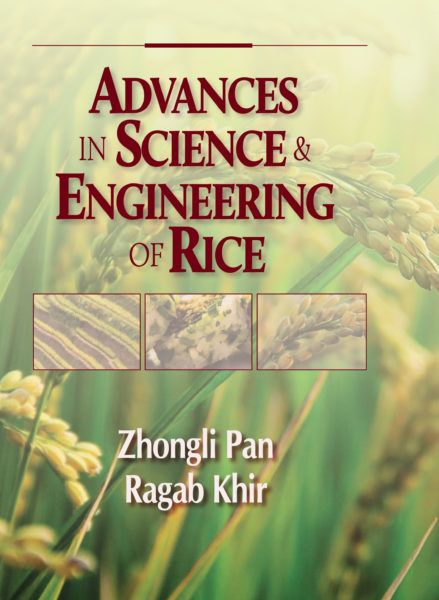BioSan Laboratories Inc. produces high-quality nutritional products, primarily multivitamins and multiminerals. Its two best-known product lines are MegaFood Daily Foods and MegaFood Essentials, which are sold in health food stores throughout the US and Europe. In addition, the company makes specialty powders from fruits and vegetables, and these are sold to food and beverage processors for use as ingredients. In total, the company makes about 260 products with several hundred SKUs.
BioSan processes cranberries, blueberries, oranges, broccoli and many more fruits and vegetables; its focus is on whole food nutrition-not, for example, USP-rated synthetic vitamins. Processing the vitamins, minerals and other materials is not as easy as it sounds. BioSan acquires vegetables and fruits both in fresh and frozen forms, so all the nutrients have been preserved. It then dries the fruits and vegetables from a slurry, which may have particle sizes sheared down to 10 microns and solids contents ranging from 5 to 40%.
Drying is the most critical part of the process, says company Executive Vice President Richard LaFond. “The destruction of phenolics, enzymes, aromatic compounds and other heat-sensitive nutrients is a major concern for us,” he says. “Many of our products are hygroscopic; therefore, the ability of the dryer to dry a hygroscopic product to a low moisture level without heating the product to a high temperature is crucial.”
LaFond needed a dryer that could operate 24 hours a day, all year long at his new Durham Research Inc. facility in Londonderry, NH. Downtime could not be tolerated, and outside weather conditions (from 15 to 100°F) throughout the year could not affect quality. Because of continuous operation, energy costs were also critical.
LaFond investigated sun-, freeze-, drum-, tray- and spray-drying, as well as other drying technologies. Technologies such as tray-drying use temperatures of 200°F or more and break down enzymes, so they were out of the running. He also immediately wrote off sun- and drum-drying. LaFond had read about MCD Technologies, (located in Tacoma, WA) and decided to investigate further. He met with the company’s founder, Richard Magoon, and together, they tried running various product samples through MCD’s Model 2 RW (Reflectance Window) dryer at the Tacoma site. After analyzing the output, LaFond found this dryer provided the results he wanted—product containing the original color, vitamins, minerals, nutrients and enzymes.
Another plus Magoon designed into the system was a Clayton gas-fired steam generator that provides just the right amount of steam for the process. Magoon said he could have selected any boiler for the dryer, but the Clayton unit comes up to operating temperature quickly and is very efficient, which keeps LaFond’s energy bills affordable.
“We put the Clayton in when we put the dryer in, and it has run very, very well,” says LaFond. “It doesn’t require any specialized labor to run the dryer and the Clayton generator.”
With PLC-based controls, the dryer provides product with consistent, high-quality results. At any given time, LaFond knows production rates, energy usage and all key process parameters, and he knows what it’s costing him to make product on an hourly basis. The dryer practically cleans itself and just keeps on running, LaFond states.
For more information, Richard Magoon, 253-476-0968, rem@mcdtechnologiesinc.com
Dry Processing Products

Weighing indicator
Avery Weigh-Tronix’s Evolution E1310 indicator/controller is a weighing and process control device that can be fully programmed to fulfill several filling and recipe applications. Faster than its predecessor, the unit can function as a standalone control system or be fully integrated with all major networks and SCADA systems. The indicator can be programmed to automatically report scale or indicator error to the company’s technical service center via an optional modem or industrial network. The controller supports all major fieldbus protocols with optional network interface cards for DeviceNet, Profibus, Modbus TCP, EtherNet/IP and others.
Avery Weigh-Tronix, 507-238-4461 (ext. 471), www.wtxweb.com
Speed reducer/gearmotor
Sumitomo’s Cyclo BBB right-angle gearmotors and speed reducers work in conveyor applications or just about any machine requiring high torque in a relatively small space. Available from 1/8 to 40 hp and ratios from 11:1 to 26,000:1 and greater, the gearmotors provide a flexible range of torque and speed combinations. The modular design features a rugged spiral bevel gearbox output and the company’s Taper Grip busing systems provide backlash-free torque transmission.
Sumitomo Drive Technologies, 800-762-9256, www.sumitomodrive.com

Shaft-seals
Available in sanitary designs, MECO shaft seals solve the problems found in dry powder and bulk process machinery, such as abrasion, heat from friction, product caking, escape of dust or vapors. Based on the concept of a thrust bearing, these seal designs can accommodate 6 mm and more of shaft run-out. Seals are available fully-split for retrofits on existing equipment, without having to remove the bearing or drive.
Woodex Bearing Company, 207-371-2210, www.woodex-meco.com

Bulk bag discharger
NBE’s Funnel Flow bag hanger has an automatic bag loop retractor and liner tensioner to provide complete material discharge from the bag without operator involvement. It changes the geometry of the bulk bag into a cone, eliminating dead spots where product can collect. The pneumatic massage paddles enhance material flow, pushing the product toward the discharge spout of the bulk bag. The traveling tube provides total dust containment and complete product discharge from the bag. The bag-spout is compressed between the inner tube and the clamp ring which results in a completely closed material transfer point. The system’s agitator paddles pull material toward the discharge, eliminating the potential for material bridging or rat holing above the conveyor inlet.
National Bulk Equipment, www.nbe-discharge.com, 616-399-2220
Bulk bag discharger
Material Transfer’s Material Master bulk bag discharging system maximizes production efficiency by offering several features. A Sure-Seal pneumatic spout clamp system ensures dust-tight operation while a Flo-Master massaging system ensures positive material flow. A volumetric feeder meters product into an existing screener, while a Flo-Lock discharge gate halts product flow for partial bag discharging. Type 304 SS on all product contact surfaces ensures easy cleaning.
Material Transfer, 800-836-7068,
www.materialtransfer.com
Weigh batching system
The Flexicon manual dump to rigid bin weigh batching system eliminates dust during manual dumping from bags, boxes, drums and other containers; de-lumps the material and feeds it gravimetrically from mezzanine level into rigid bins placed onto a floor scale. The manual dumping station has a high-velocity vacuum fan that draws airborne dust from the operator’s atmosphere onto two cartridge fillers. Automatic reverse-pulse filter cleaning allows continuous, efficient operation. Timer-activated solenoid valves release short blasts of compressed air inside cartridge filters, causing the built-up dust to fall into the hopper. All surfaces are SS finished to sanitary standards.
Flexicon Corp., 888-353-9426, www.flexicon.com

Hoist bulk bag discharger
Spiroflow’s hoist design Type 6 bulk bag discharger can be used for unloading powder or granular product material into various processing equipment including mixers, sifters, mills, etc., as well as into packing equipment. Transfer from the discharger to process or packing can be direct or via one or more of the range of the company’s conveyors, which include flexible screw, vacuum, pneumatic and aero-mechanical units. The discharger is available in carbon steel and 304 SS, and the unit allows one operator to control a standard one-ton hoist, which positions the bulk bag into the discharger. The hoist runs along a fully load-tested, integral lifting I-beam.
Spiroflow Systems, 704-291-9595, www.spiroflowsystems.com










